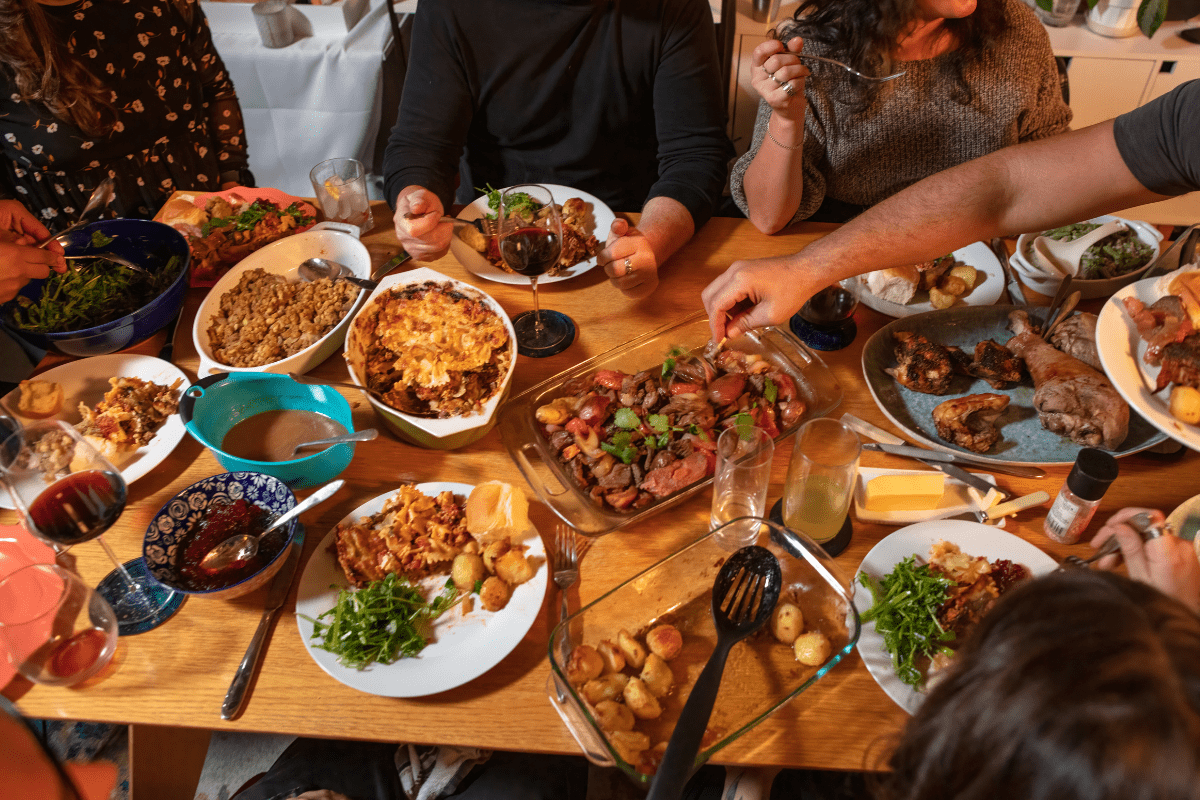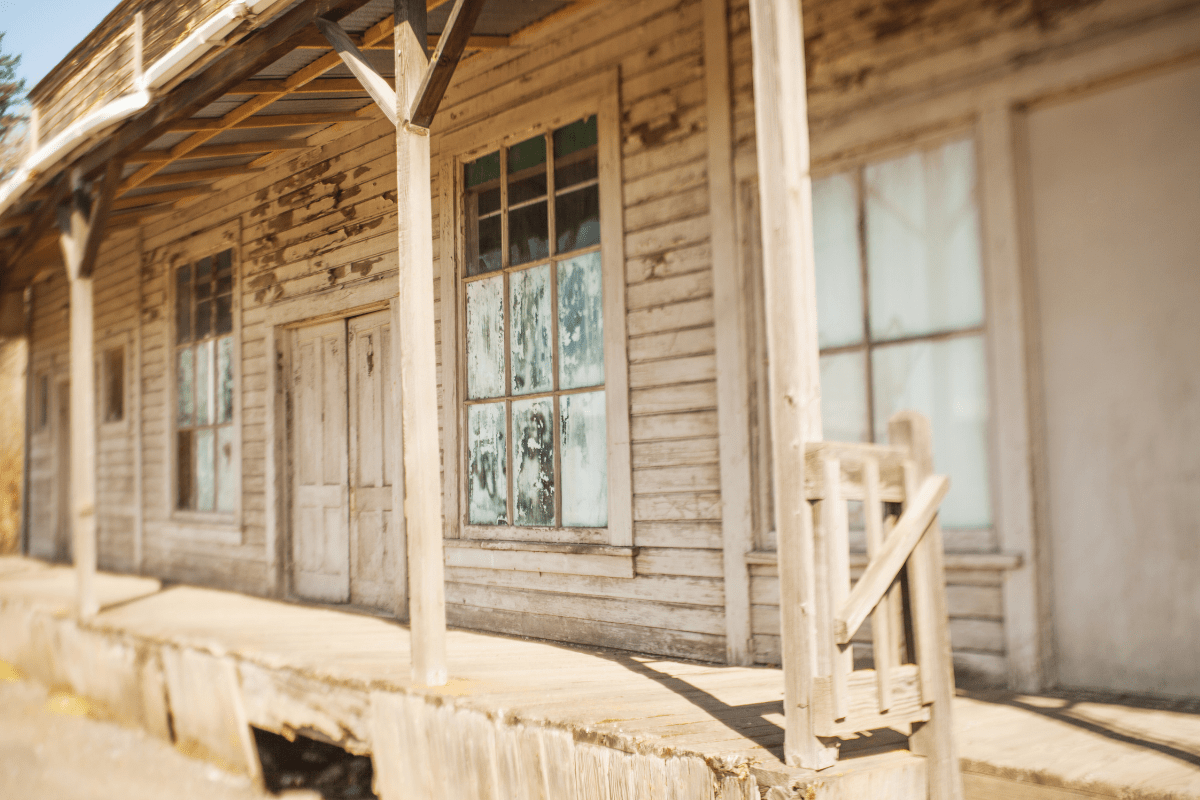If you've ever wondered why New Mexicans get defensive when you confuse their food with Tex-Mex, prepare for enlightenment. This isn't just another regional cuisine – it's a 400-year-old culinary tradition that'll make you question everything you thought you knew about southwestern food.
Trust me, after diving deep into the world of green chile obsession and breakfast burritos that could change your life, you'll understand why locals consider their state's official question to be "Red or green?"
The delicious identity crisis that isn't
New Mexican cuisine sits at the crossroads of Native American and Spanish colonial traditions, creating something entirely its own. Unlike its cousins south of the border or the cheese-heavy plates of Texas, this food developed in splendid isolation, protected by mountains and desert from outside influence.
The foundation starts with indigenous peoples who farmed this high desert for thousands of years. Pueblo communities still use clay cooking vessels that date back to 1300 CE, their mica-flecked surfaces creating even heat distribution that modern cookware struggles to match. These aren't museum pieces – they're working tools that produce flavors you simply can't replicate in your All-Clad.
When the Spanish showed up, everything changed (but not really)
Juan de Oñate's 1598 expedition brought more than conquistador ambitions. His 7,000 head of livestock introduced beef, pork, and dairy to a landscape that had relied on wild game and the famous Three Sisters: corn, beans, and squash grown together in agricultural harmony. The Spanish needed wheat for communion wafers, but it quickly became essential for daily life, giving birth to flour tortillas that would eventually cradle countless breakfast burritos.
The real genius of New Mexican cuisine lies in how these cultures merged rather than clashed. Spanish colonists brought their beehive-shaped hornos (outdoor ovens), but Pueblo bakers adopted them so thoroughly that many people today assume they're a Native tradition. This cultural exchange created sopaipillas – those puffy, hollow breads that arrive at your table like edible clouds, ready to be torn open and drizzled with honey.
The Mexican period from 1821 to 1848 added another layer, but here's where geography becomes destiny. The Camino Real trade route stretched 1,600 miles from Mexico City to Santa Fe, making annual supply runs an epic undertaking. This isolation meant New Mexican cooks couldn't just pop over to borrow a cup of mole spices. They had to work with what they had, perfecting simple preparations that highlighted their incredible local chiles rather than masking them with complex spice blends.
All hail the mighty chile (spelled correctly, thank you)
Let's get one thing straight: it's "chile" with an "e," not "chili" with an "i." Making this mistake in New Mexico is like ordering a cheesesteak "wit" onions in Philly – technically wrong and culturally painful. The state produces 77% of America's chile peppers, harvesting 46,750 tons in 2023 alone. That's a lot of capsaicin-induced endorphins.
New Mexico's chile varieties read like a spicy roll call of agricultural achievement. Big Jim chiles stretch 6-8 inches long, perfect for stuffing into chile rellenos. Sandia chiles offer balanced heat for everyday cooking, while the legendary Chimayó variety from northern mountain valleys commands premium prices when you can find it. The newest cultivars from NMSU range from the mild NuMex Joe E. Parker at 900 Scoville units to Lumbre, which will make even heat-seekers reconsider their life choices.
The great roasting ritual
Come September, the smell of roasting chiles becomes New Mexico's unofficial autumn announcement. Sure, you could use one of those commercial drum roasters that tumble hundreds of pounds hourly, but many families still prefer the backyard method: fresh chiles arranged on mesh screens over open flames, turned by hand until the skin blisters and blackens just right. It's like the difference between machine-made and hand-rolled pasta – technically similar, fundamentally different.
The preparation philosophy reflects confident simplicity. Green chile sauce contains roasted chiles, onions, garlic, and salt. That's it. No tomatoes hiding the flavor, no seventeen-spice secret blend, just pure chile essence. Red chile sauce follows the same minimalist approach: dried pods rehydrated and blended with basic seasonings, maybe thickened with a touch of flour. This isn't laziness – it's the culinary equivalent of a musician playing an acoustic set. When your main ingredient is this good, anything else is just showing off.
The dishes that define a state
Some states have official birds or flowers. New Mexico has an official state cookie, and it's not messing around. Biscochitos earned this distinction in 1989, and these anise-scented, lard-based cookies deserve every bit of recognition. Made properly (which means with actual lard, not butter or shortening), they crumble at the slightest pressure, leaving a trail of cinnamon sugar and happy memories.
The breakfast burrito situation
While not ancient, the breakfast burrito has become so integral to New Mexican life that excluding it would be criminal. Here's what belongs inside:
- Scrambled eggs (obviously)
- Hash browns (non-negotiable)
- Bacon or sausage
- Cheese (but not too much)
- Green chile (absolutely essential)
- Optional: beans, never rice
Wrap it in a flour tortilla the size of a small blanket, and you've got portable perfection. Some places add fancy ingredients like avocado or spinach, but that's like putting racing stripes on a classic car – unnecessary when the original is already perfect.
Posole: History in a bowl
Posole tells the story of New Mexican cuisine in every spoonful. Native peoples developed nixtamalization, treating corn with lime to increase nutrition and create hominy's distinctive texture. Spanish colonists added pork, creating the hearty stew that appears at every celebration from weddings to Super Bowl parties. Each family guards their recipe like state secrets, though most involve pork shoulder, hominy, and enough red chile to warm you from the inside out.
Carne adovada enters the chat
If posole is Sunday dinner, carne adovada is Saturday night. Pork shoulder marinates for 24 hours in pure red chile sauce – no tomatoes, no fancy spices, just chiles, garlic, oregano, and vinegar. Slow-cooked until it falls apart at the mere suggestion of a fork, it fills burritos, tops enchiladas, or stands alone as proof that sometimes the best things in life are simple, spicy, and require patience.
The enchilada evolution
Forget everything you know about enchiladas. New Mexican versions stack flat like pancakes rather than rolling into tubes. Here's the proper assembly:
- Corn tortilla (preferably blue corn)
- Cheese and onions
- Another tortilla
- More cheese and meat
- Final tortilla
- Smother in chile sauce
- Top with cheese and lettuce
The famous question "Red or green?" reaches peak importance here. Can't decide? Order "Christmas" – both sauces together, creating a festive plate that locals adopted so enthusiastically in the 1980s that it's now traditional.
Ancient techniques that refuse to die
Despite modern conveniences, traditional cooking methods persist because they produce superior results. Hornos still fire up for feast days, their wood-fired chambers creating bread crusts that make your home oven weep with inadequacy. Community baking days see families gathering to share labor and gossip while waiting for their loaves.
Traditional preservation techniques evolved from necessity into art forms. Carne seca uses ancient meat-drying methods that concentrate flavors in ways your freezer never could. Chicos – corn kernels roasted and dried for winter storage – add smoky depth to stews months after harvest. These aren't quaint traditions maintained for tourists; they're practical techniques that happen to taste amazing.
Finding the real deal outside New Mexico
Living outside the Land of Enchantment doesn't mean settling for Old El Paso. The Hatch Chile Store ships fresh chiles during harvest season and offers frozen options year-round. Bueno Foods provides authentic products, while the Chile Pepper Institute sells seeds for growing your own.
When shopping, look for the New Mexico Certified Chile™ label. For other essentials:
- Blue corn products (never regular cornmeal)
- Mexican oregano (completely different plant)
- Whole cumin seeds
- Pure chile powder (no added spices)
- Posole corn (not regular hominy)
- Piñon nuts (when available)
Where to eat like a local
Authentic restaurants exist throughout New Mexico, each with its own interpretation of traditional dishes. Santa Fe's The Shed has served benchmark red chile since 1953, while Rancho de Chimayó operates from a restored hacienda dating to 1965.
Albuquerque's Mary & Tito's Cafe might serve the state's best authentic food – locals line up for carne adovada that converts skeptics into believers. Down south, La Posta de Mesilla occupies an 1840s adobe where Butterfield stagecoaches once stopped, now serving tostadas compuestas that honor tradition while acknowledging modern tastes.
Hidden gems beyond the cities
Eastern New Mexico hides treasures like Clovis's Taco Box, where the Martin family has maintained consistent quality since 1969. In Roswell, Los Cerritos serves chile rellenos that earn superlatives from anyone who tries them. Western regions feature Gallup's Earl's Family Restaurant, operating since 1947 with four generations of the same family, and Jerry's Cafe, where one employee has made their red chile sauce the same way since 1976.
These aren't tourist traps with sombreros on the walls. They're community gathering places where recipes pass through generations and "mild" is relative to your zip code.
The living tradition continues
New Mexican food traditions adapt while maintaining their essential character. Pueblo feast days feature communal cooking where hundreds gather to share posole, green chile chicken enchiladas, and bread from the hornos. The Hatch Chile Festival draws 30,000 visitors each Labor Day weekend, combining carnival atmosphere with serious chile appreciation.
Modern chefs like James Beard Award winner Lois Ellen Frank push boundaries while respecting tradition. She describes Native American cuisine as encompassing "four historic periods: pre-contact, first contact, government issue, and new Native," acknowledging painful history while celebrating renaissance. Contemporary Native chefs reclaim ingredients and techniques while creating innovative expressions of ancient traditions.
Why this matters more than ever
Climate change threatens traditional ingredients. Piñon nuts, once abundant, now cost up to $40 per pound when available. Drought affects chile crops, forcing adaptation while maintaining authenticity. Yet the economic impact remains substantial – $43.12 billion in 2024 from food and agriculture alone.
But reducing New Mexican cuisine to economics misses the point entirely. This food connects people to land, history, and community. Every pot of posole simmering for a feast day, every ristra hanging to dry, every heated debate over red versus green represents cultural preservation through daily practice.
Your journey into New Mexican cuisine starts now
Understanding New Mexican food means accepting that simple doesn't mean easy. It means appreciating how geographic isolation created confident cuisine that doesn't need to prove itself with complexity. It means recognizing that a properly made sopaipilla, arriving warm at your table with a squeeze bottle of honey, represents centuries of cultural exchange in edible form.
Whether you're planning a pilgrimage to eat your weight in green chile or attempting to recreate these flavors at home, remember that New Mexican cuisine isn't just about following recipes. It's about understanding why locals get misty-eyed discussing their grandmother's tamales, why chile roasting season feels like a holiday, and why that first bite of authentic carne adovada might just ruin you for all other pork dishes.
Welcome to New Mexican cuisine, where the question isn't whether you can handle the heat – it's whether you're ready for a culinary tradition that's been perfecting itself for 400 years. Just remember: it's chile with an "e," red or green is a legitimate life choice, and yes, you absolutely need to put green chile on that. Whatever "that" happens to be.




